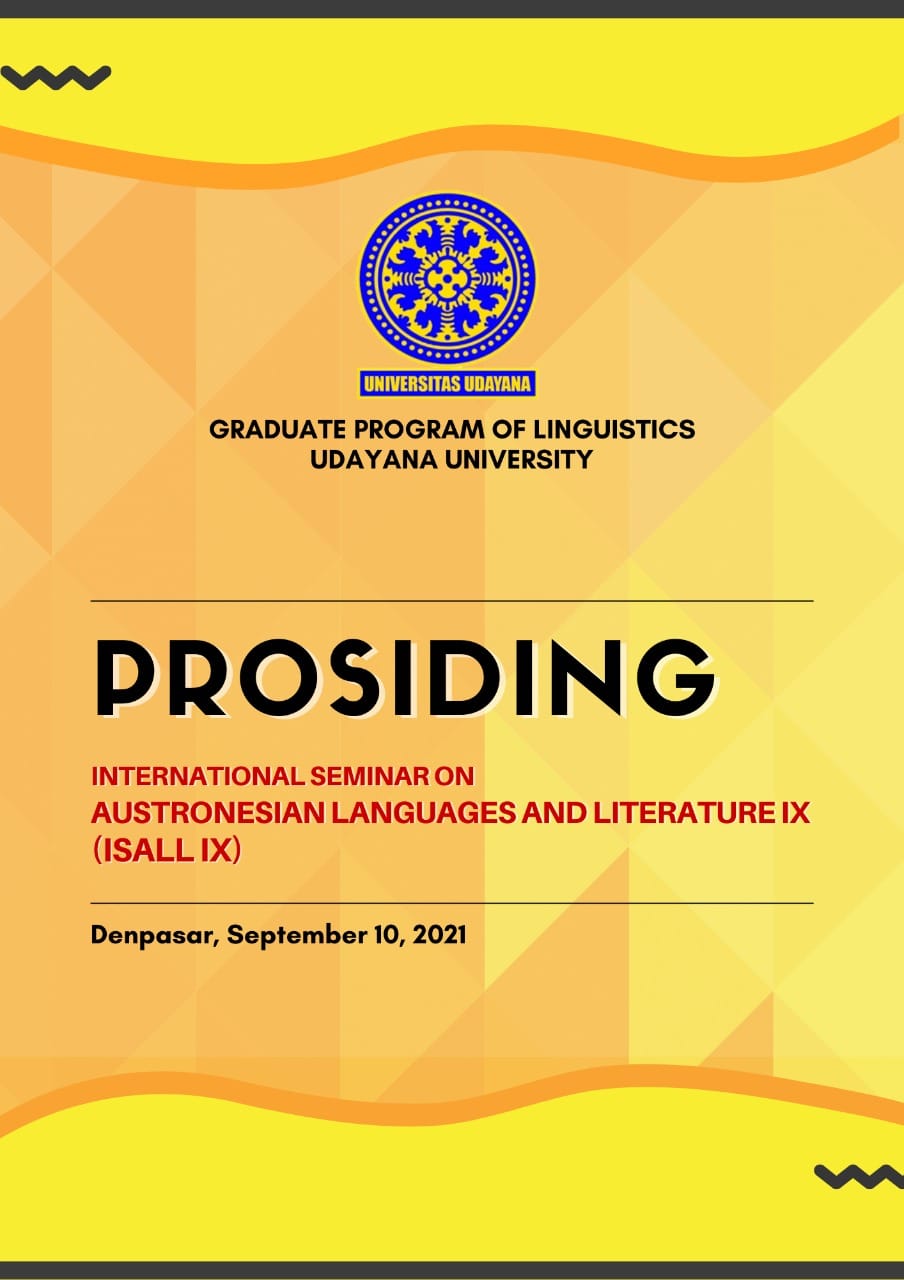Pronoun Syllable Elision in Bahasa Indonesia: Case of Casual Speech in Waingapu
Abstract
This paper discusses elision as one of phonological processes in the Indonesian speech, particularly on the use of Bahasa Indonesia in Waingapu, an eastern city in Indonesia. Elision (or deletion) is a term used in phonetics and phonology to refer to the omission of sounds in connected speech, where both consonants and vowels may be affected, and sometimes whole syllables may be elided (Crystal 2008). As in the mostly eastern Indonesia area, in Waingapu, people usually speak at a rapid speed. People tend to simplify words and phrases to ease the pronunciation and meet their needs for easy and fast conversation. This is the main cause of elision to happen. Data is obtained through recordings of daily speeches in various places. This descriptive qualitative study shows syllable elision in almost all pronouns, both as subject and object in a sentence, such as sa from the pronoun saya and ko from the pronoun kau. This elision, combining with other processes, also leads to the creation of new words which function as possessive pronouns as in dia punya becomes de pung and later changed to dem to denote his/her.
References
Chaer, Abdul. 2009. Fonologi Bahasa Indonesia. Jakarta: Rineka Cipta.
Crystal, David. 2008. A Dictionary of Linguistics and Phonetics. 6th ed. Oxford: Blackwell Publishing.
Finegan, E. 2004. Language: Its Structure and Use. Massachusetts: Thomson Wadsworth.
Fromkin, Victoria, David Blair, and Peter Collins. 2000. An Introduction to Language. Sydney: Harcourt Australia.
Kridalaksana, Harimurti. 2008. Kamus Linguistik. Jakarta: Gramedia.
Roach, Peter. 2009. English Phonetics and Phonology: A Practical Course. 4th ed. Cambridge: Cambridge University Press.
Anon. 2016. Kamus Besar Bahasa Indonesia. Badan Pengembangan dan Pembinaan Bahasa, Kementerian Pendidikan dan Kebudayaan Republik Indonesia.
Anon. 2021. “Merriam-Webster Dictionary.” Retrieved (https://www.merriam-webster.com).
Andana, Aditya Hendy. 2018. “Elisions Correspondence To Speech Rate In Eminem’s Offended Sub-Verses.” Language Horizon 6(1):50–61.
Firdhani, Anggi Rizky, Lia Maulia Indrayani, and Sutiono Mahdi. 2018. “The Use of Consonant Elision By Sri Mulyani During Her Interview Session With the Banker.” ELTIN JOURNAL, Journal of English Language Teaching in Indonesia 6(2):53–58.
Harrison, Phil. 2007. “The Lost Consonants of Atlanta.” Language Sciences 29(2):237–46.
Lawi, Mario Ferdinandus. 2020. “Ambivalensi Manusia Sabu: Identitas Dan Politik Ingatan Dalam Tegangan Katolik-Jingitiu.” Universitas Sanata Dharma.
Nasrulloh, Septiana Iman, Salman Yasri, and Evie Kareviati. 2019. “Elision in Students’ Pronunciation During Presentation.” PROJECT (Professional Journal of English Education 2(6):791–96.
Owusu Ansah, Victoria. 2020. “Elision in Esahie.” Ghana Journal of Linguistics 9(2):22–43.
Pujiastuti, Rahayu, and Luluk Isani Kulup. 2016. “Struktur Kata dan Suku Kata Dalam Perkembangan Fonologis Bahasa Indonesia.” BASTRA 3(2).


